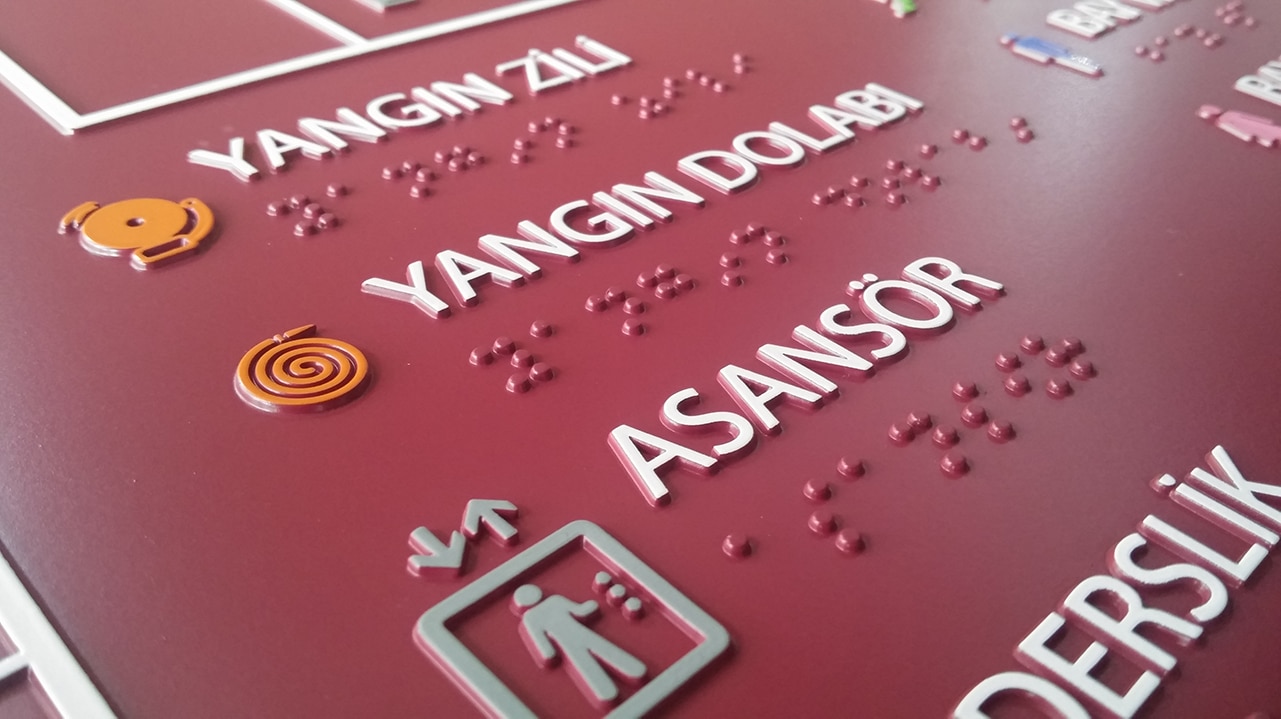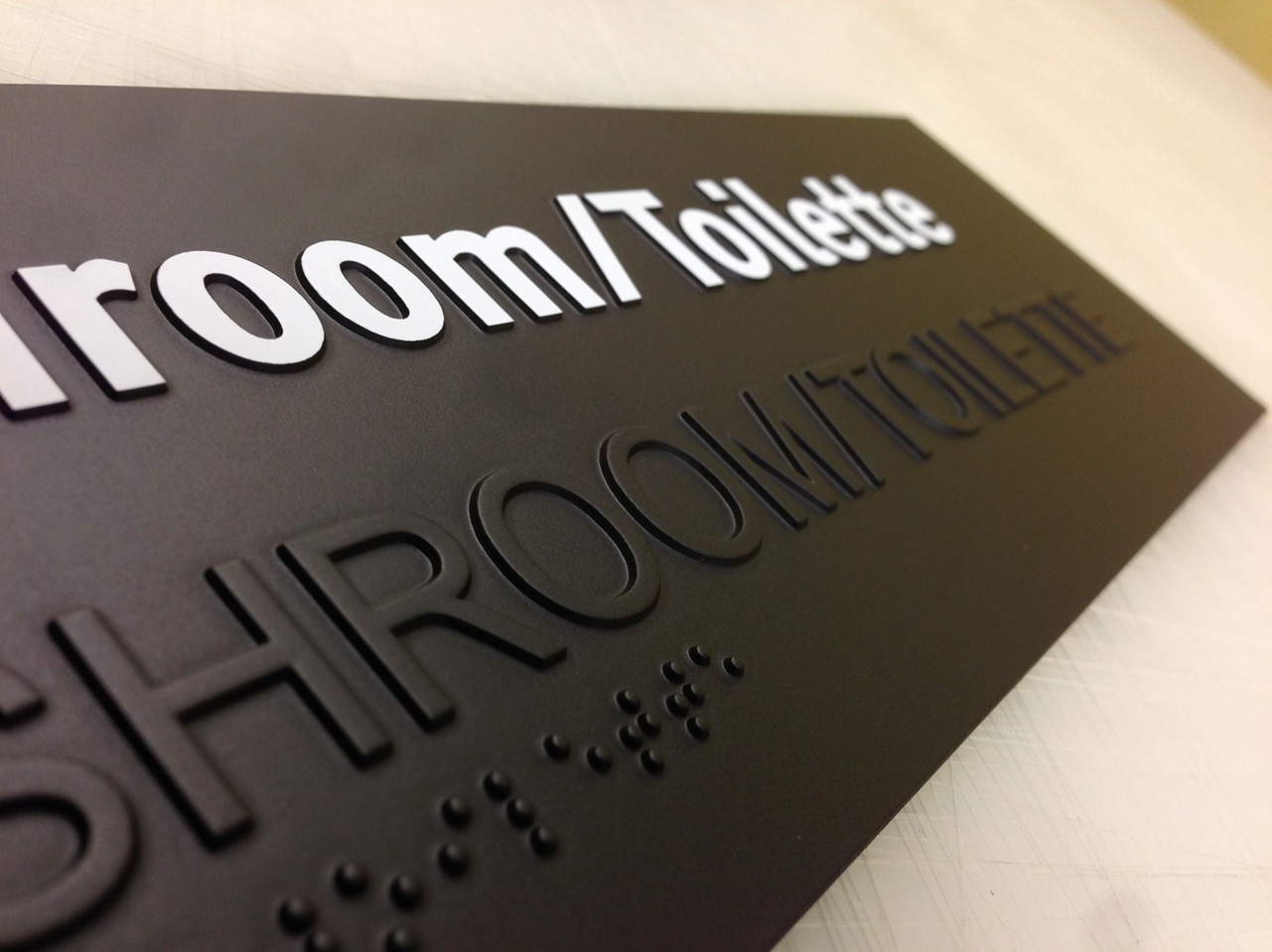
The experts at Nova Polymers say proper placement of signs is key. Too often projects incorporate signs in the wrong places. [Photo: Courtesy of Nova Polymers]
The experts at Nova Polymers design with the disability community front-of-mind.
With fines upwards of $75,000 a violation, meeting signage compliance codes for the Americans with Disabilities Act is a big deal for any building owner. That is why Nova Polymers—the largest manufacturer and distributor of photopolymer sign products around the world—has made ADA education a priority. Nova Polymers meets with more than 100 architectural firms yearly, reaching more than 2,500 architectural employees.
Every day Nova Polymers’ efforts support the disability community of 7.6 billion people as they navigate the built environment with sustainability, design, and functionality in mind. For tips on how to effectively meet signage codes without skimping on design, gb&d turned to Bob Greenberger, director of sales and education at Nova Polymers.
How important is ADA signage compliance?
In one word—extremely. If you put yourself in the shoes of a blind or visually impaired person and try to navigate the built environment without ADA compliant signs, there is a lot that can go wrong. It is just like a person in a wheelchair trying to go up the steps. It is a functional barrier if signs are not compliant.
How is compliance changing?
I believe, right now, priorities are bent toward helping those with disabilities more than ever. People are contacting the access board and consistently trying to help develop standards to further aid a person with disabilities. It could be about the height of the sign or the placement or the thickness—all of the aspects that would affect signage.
What are some of the most common mistakes you see?
There are so many. Weekly I am in airports, hotels, office buildings, and restaurants observing the signage. Some of the biggest mistakes I see include a lack of signage—all rooms are not being identified. Secondly, the signs are missing braille or have been vandalized in some way. People will be bored in high traffic areas and pick off the braille on the signs. Then, signs are often installed in the wrong place. They are too far away from the door to the room so you can’t identify the room, or they are not on the right side of the door where they are supposed to be, or the sign is actually on the door so the people trying to read it might get hit by a closed door or unable to find it if the door is open.
Where does beautiful design fit in?
Architects concentrate 99% of their efforts on creating this gorgeous building. Signage should complement and/or enhance their design. The frustrating thing for designers is that the effort and thought put into their building creation is cheapened with catalog signs, possibly changing the whole look. With Nova Polymers materials, we can match any construction or design intent.
Why are security and vandalism important to consider?
If the visually impaired can’t properly read the signage, then they can’t navigate the built environment on their own. Additionally, for a building owner, if the signs are being vandalized they are having to replace them on a regular basis. It can be costly to the owner. Nova Polymers material is the least susceptible to damage, as the braille is processed as an integral part of the sign.
How does sustainability fit in?
This is the most frequently asked question at my ADA presentations—what about sustainability? Our architects and designers are very mindful of LEED and making sure signage is environmentally friendly. Nova Polymers materials are recyclable and made to outlast the building’s design. We make sure we are minimizing our footprint and doing what we can to protect the environment.


